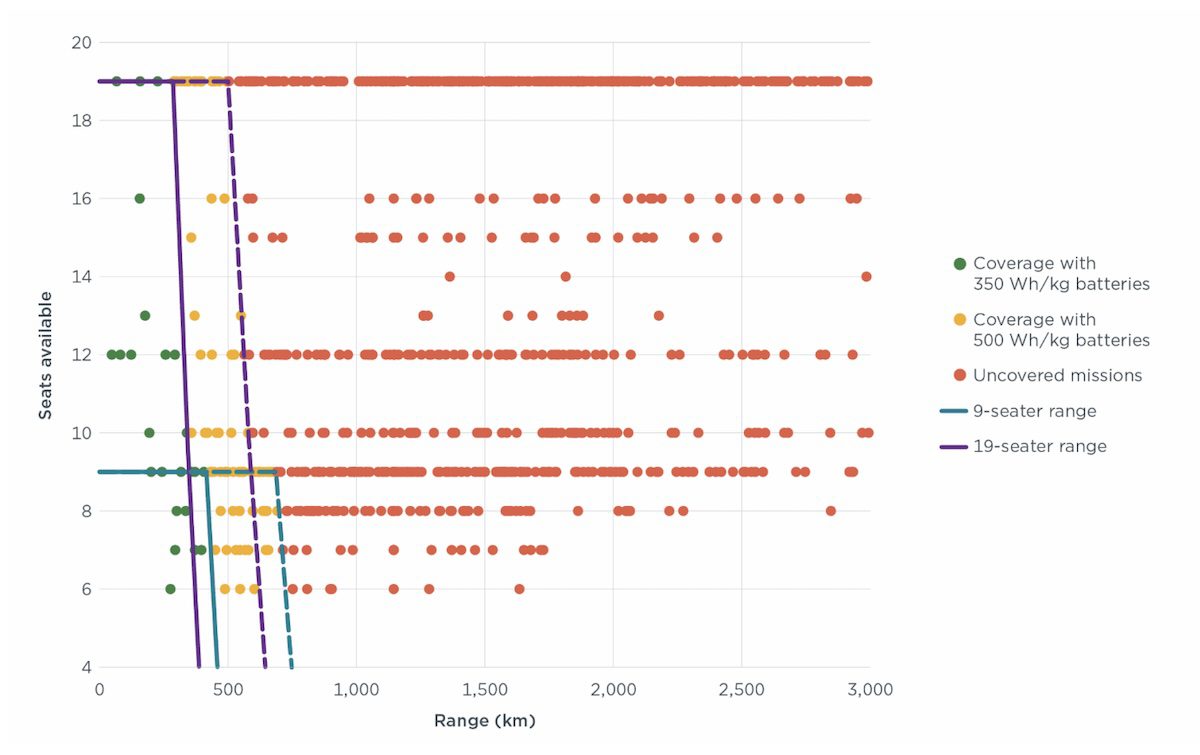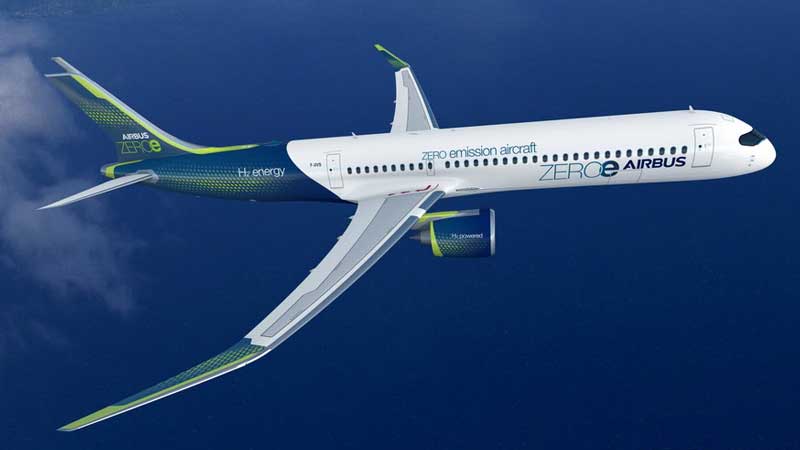Figure 1. Electric aircraft coverage of private jet missions (each dot represents 3,000 flights using Available Seat Kilometers-median points)


Using a more ambitious future scenario that assumes a battery energy density of 500 Wh/kg results in the potential to cover 1,214,282 flights—more than double the number under current technology—and that is 35% of small and medium-size flights.
This would result in emission savings of approximately 2.15 million tonnes of CO2 (12% of emissions in 2023), 6,260 tonnes of LTO NOx (29%), and 59.2 tonnes of LTO PM2.5 (29%). With the extended range made possible by higher battery density, the GHG reduction potential is nearly three times greater than what is achievable with the current 350 Wh/kg battery technology.
A carbon life-cycle comparison between jet fuel, electric, and hydrogen-powered aircraft reveals a more limited potential to reduce GHG emissions.
To calculate CO2 equivalent (CO2e) emissions, we assume constant emissions of 305 g CO2e/kWh for grid electricity, taken from the Stated Policies Scenario case in the United States for 2035 (IEA World Energy Outlook), and 29 g CO2e/kWh for renewable electricity, assuming a 50-50 split of generation from wind and solar (Bieker, 2021).
Battery manufacturing emissions are estimated at 48 kg CO2e/kWh of battery capacity. Based on battery sizes of 920 kWh (9-passenger aircraft) and 780 kWh (19-passenger aircraft), and assuming a lifespan of 3,000 cycles, this adds approximately 14.72 kg and 12.48 kg CO2e per flight, respectively.
Table 1 presents the carbon intensity per flight for both jet fuel and battery-powered aircraft. The results show that when powered by current grid electricity, battery-powered aircraft produce 12% more GHG emissions than conventional jet fuel.
In contrast, when powered by entirely renewable energy, battery-powered aircraft reduce emissions by 89% compared with jet-fueled aircraft.
Table 1. Emissions per flight for different types of fuel carbon life cycle


The range of battery-powered aircraft impacts not only individual flights but also the aircraft’s operational flexibility over its lifetime. To explore this further, we analyzed flight legs for each registered private jet that operated in 2023 using the ICCT’s Private Jet Inventory.
From 22,661 unique aircraft registrations, we identified the maximum flight distance each aircraft completed during the year.
At an energy density of 350 Wh/kg, only 64 aircraft—representing 404 flights—could operate entirely within the feasible range of battery-powered flight. Increasing the energy density to 500 Wh/kg expands feasibility to 351 aircraft and 9,585 flights. That’s still only 0.01% and 0.26% of all private jet flights for the current and future battery density, respectively.
The reality is that most private jets operate across a wide range of distances throughout their lifespan and this poses a challenge for electrification. Moreover, because battery-powered aircraft have lower cruise speeds than their fuel-powered counterparts, there are longer flight times that further reduce their competitiveness for time-sensitive travel.
With electrification, there are also infrastructure challenges, including the need to develop high-power electric charging facilities at airports. Additionally, the environmental benefits of ZEPs depend heavily on the source of electricity.
For policymakers, a targeted tax or restriction on private jets powered by fossil fuel could be justified when clean alternatives become available. However, such policies would be most effective if timed with the availability of renewable energy and charging infrastructure.
Clearly, we shouldn’t expect electrified private jets to dominate the skies anytime soon. So, what can be done in the near term about their emissions?
I see three possibilities: (1) a rapid scale up of sustainable aviation fuels made from advanced biofuels or renewable power (“e-kerosene”); (2) actions to avoid forming persistent condensation trails (“contrails”) that have strong warming impacts; and (3) eliminating exemptions for private jets in carbon pricing approaches like the EU Emissions Trading System.
Implemented together, these could go a lot farther in addressing this problem than electric aircraft can today.


